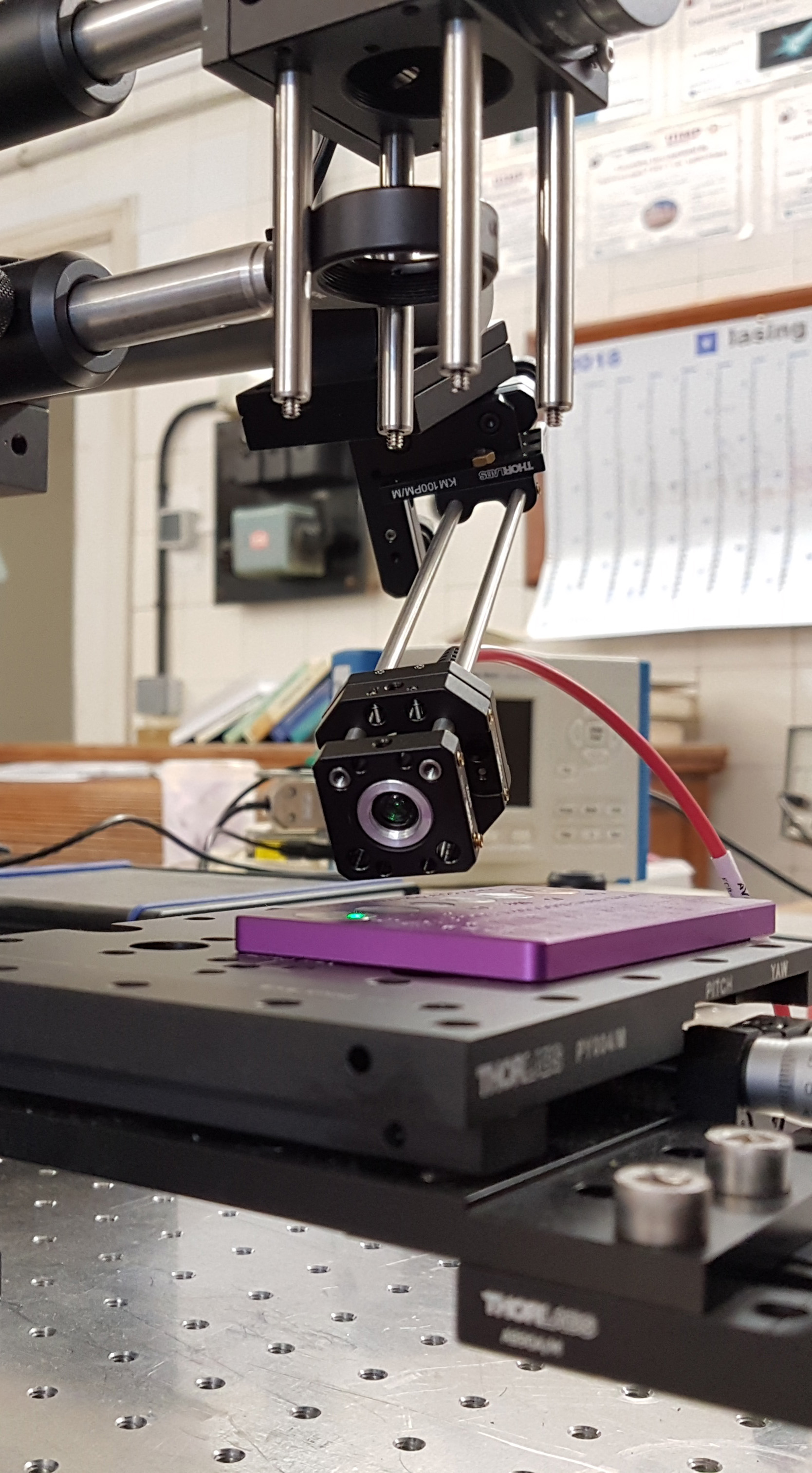Lines of Research: Main Topics
Our research group works on the development of Laser Techniques for analytical applications. Given the multidisciplinary importance and use of Laser-Induced Breakdown Spectroscopy (LIBS), we have successfully applied this technique to biological and geological samples, particularly with the identification and detection of pathogens for public safety-oriented applications, forensics environmental studies and geology. The samples that have been studied include aerosols, human bones and teeth, bacteria and fungi, swine tissues, honey, wine, milk, archaeological bones, speleothems, coral and seashells.
Mainly we investigate the atomic and molecular signatures generated by LIBS and application of chemometric methods for the analysis if the data. During the past years where our group has advanced in exploring the LIBS technique in various fields, it has also shown great progress in the area of chemometrics. Further work includes study of processes in the plasma through analytical data processing of the laser plasma spectra, applying a broad range of chemometric tools.
The members of our group have been engaged in theoretical and experimental research activities in various fields within the area of Laser Chemistry. We are particularly interested in laser ablation processes and combining these with different techniques and analysis processes.
We can summarize our activities in the following main research lines:
• Development of spectroscopic techniques for analytical applications: This line of research focuses on the analysis and study of the composition of elemental materials using plasma spectroscopy generated by laser ablation (Laser-Induced Breakdown Spectroscopy, or LIBS). A priority aspect is the development of new methods and techniques of analysis, mainly focused on the detection and identification of elements and compounds in agri-food, environmental management and security-oriented applications.
• Statistical and mathematical methods applied to spectroscopy analysis: This research line deals with and studies different mathematical and statistical procedures applied to spectroscopic data processing, for both analysis and modeling. A priority aspect is the development of methods and instruments for industrial and quality control processes based on optical, spectroscopic and luminescence techniques.
Research Projects
- Development of laser ablation spectroscopic technique [LIBS] in samples of aerosol for the particulate matter (PM) characterization. PM is being studied in order to advance in the knowledge of the general atmospheric circulation in the high latitudes of the Southern Hemisphere.
- Archaeological studies with LIBS for sample classification with bones.
- Adulteration of Honey and related products in colaboration with APISMEL
- Investigation with LIBS for the microbiological studies using nanoparticles. Optimization of a laser system for the determination of metals in microbial samples.
- The proposed research project is based on devising a fast methodology based on Laser Induced Breakdown Spectroscopy (LIBS) for a detailed study of the bacterial cells at the atomic level in order to track the changes in the elemental concentration along the course of cell growth and during the ongoing metabolic processes. The aim of this project is to employ an interdisciplinary approach to acquire an integrated and multidisciplinary viewpoint in order to advance and promote understanding of LIBS analysis and biological processes occurring in the bacterial cells in relation to the elemental changes particularly of metal ions.
- Collaborative project Spain - Latin America: Methods for identification and characterization of extra virgin olive oil with laser ablation.
LASER CHEMISTRY RESEARCH GROUP
DEPARTAMENTO DE QUÍMICA ANALÍTICA - FACULTAD DE CIENCIAS QUÍMICAS
Av. Complutense s/n 28040 Madrid – España Tel: +34-91 394 4368 FAX: +34-91 394 4329

